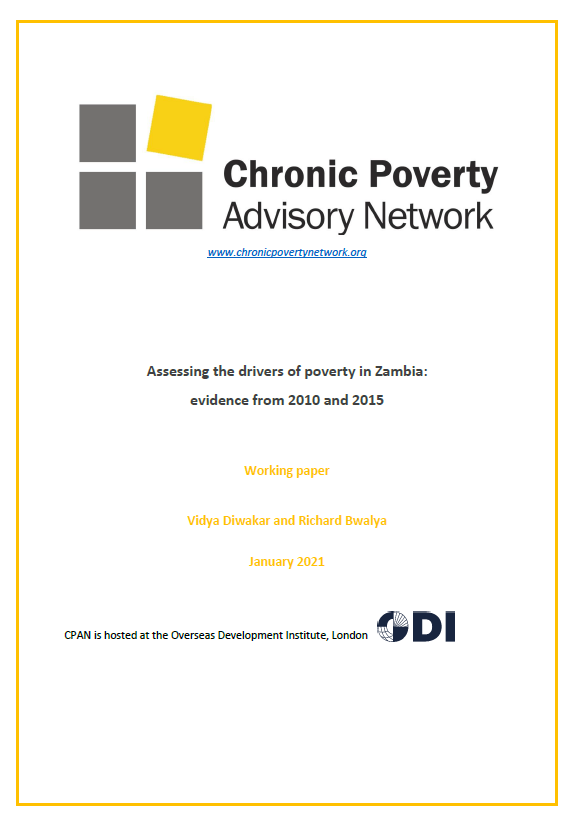Poverty has remained high and also predominantly a rural phenomenon in Zambia, despite various interventions and policies over the years. As of 2015, estimates put rural poverty at 73.6%, compared to urban levels of 23.4% (CSO and World Bank, n.d.). Understanding and responding to the drivers of rural and urban poverty can help contribute to poverty reduction. The objective of this paper is to investigate these drivers of poverty in Zambia. It responds to the question: Why has extreme poverty remained at such a high level and so widespread? To answer this question, the analysis employs the 2010 and 2015 rounds of the Zambia Living Conditions Monitoring Survey (LCMS) to identify correlates of poverty in rural and urban areas, by province and by expenditure quintile. It also explores the extent to which continued high levels of poverty may be accounted for by varied poverty dynamics around the poverty line.
The analysis reveals that there continue to be provinces in Zambia with high poverty in 2015, much of which is chronic in nature. Relatively limited escapes from poverty and more variable provincial-level impoverishment suggests a context in which resilience is weak. Even so, there are positive factors that offer some protection against poverty and improve welfare across the wealth distribution – in particular, a secondary education or higher, access to electricity, non-farm enterprises and owning livestock. A policy focus on these areas and the relevant intersections (for example, the combination of a secondary education or higher and a non-farm enterprise) would benefit Zambians on the road to zero poverty.
Authors: Vidya Diwakar and Richard Bwalya

